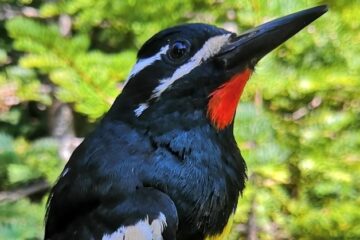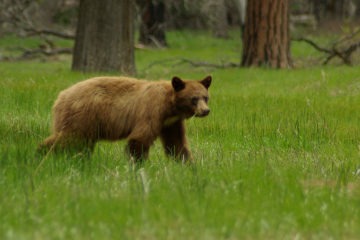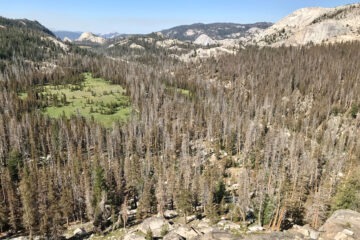Many elements of the restoration work our donors support in Yosemite transform how an area looks: crews clean up remnants of backcountry campfires, remove tamped-down “social” trails and plant native flowers that brighten meadows. But it’s not all about appearances! Beyond keeping the park beautiful, that careful work helps ensure that meadows, forests, lakes and rivers are healthy, functional homes for the creatures that rely on them.
For example, let’s say you’re hiking in the high country on the John Muir Trail, which covers more than 200 miles of Sierra Nevada terrain — including some of the range’s incredibly biodiverse mountain meadows.
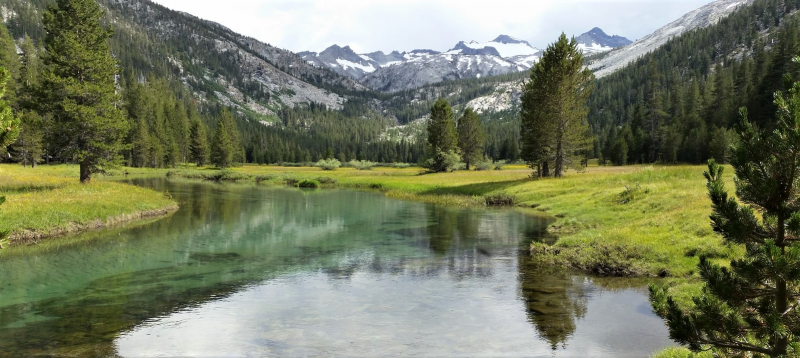
The Tuolumne River winds through Lyell Canyon, a haven for diverse animals. Photo: NPS
You’ll find some of that precious herbaceous habitat along the 9-mile stretch of the JMT in Yosemite’s Lyell Canyon, where crews have relocated sections of trail out of the meadow and replanted the heavily rutted original route.
In addition to creating a more pleasant hiking experience, that donor-supported work has helped reinvigorate a high-elevation riverside meadow that supports a huge variety of animals, including threatened Yosemite toads and endangered Sierra Nevada yellow-legged frogs.
Loosening and revegetating the former trail footprint helps restore natural water flow in the meadow, reduces erosion and helps protect native plant communities. (A similar project several miles east rerouted a JMT section out of Upper Cathedral Meadow, moving the trail to the edge of a forested area and reviving the formerly fragmented wetland.)
If you hop off the JMT and go north to Tuolumne Meadows, you might see park staff and volunteers removing informal trails, or mapping or treating invasive plants — key steps in ensuring ecosystem balance. That work has paid off, wildlife-wise: In 2017, crews reported finding Yosemite toads in the meadows for the first time in decades.
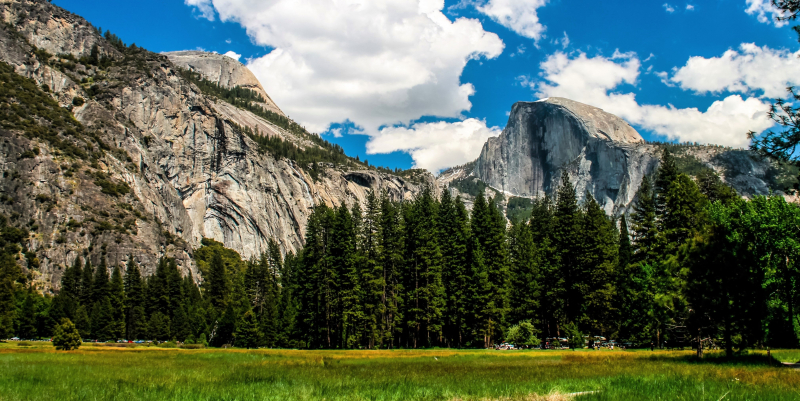
Yosemite Valley’s meadows support a wide variety of wildlife species. Photo: Pixabay
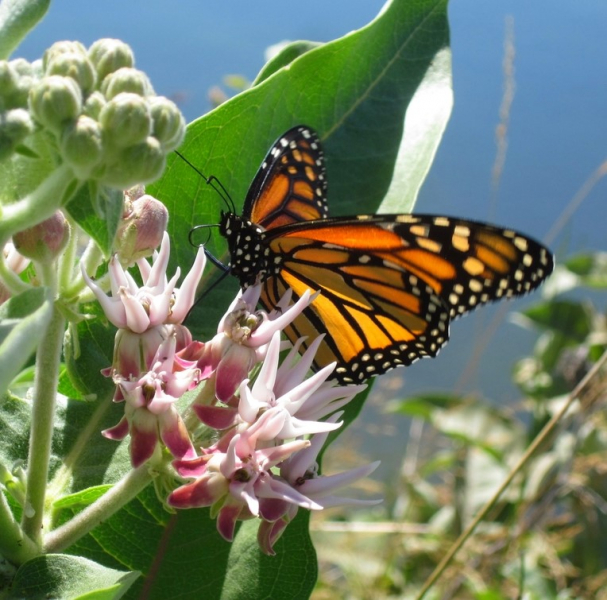
A monarch lands on milkweed in a colorful moment that captures the pollinator-plant relationship. Photo: USFWS
Next, follow the Tioga and Big Oak Flat roads down to Yosemite Valley. (If you’re driving, stick to the speed limit and stay alert! Many Yosemite animals, including black bears, great gray owls and Pacific fishers, are vulnerable to being injured or killed by vehicles; this year, your gifts can help the park install speed feedback signs to prompt people to slow down. )
Once you reach the Valley, watch the water flowing down steep granite walls and into the Merced River, which wends west through a series of meadows. If you wander along those meadows in the summer, you might spot the pearly pink petals of showy milkweed.
The beautiful blooms aren’t just there to dazzle human onlookers — milkweed is vital to the survival of monarch butterflies, which rely on the plant as the sole food source for their caterpillars.
Milkweed and other native plants in the Valley recently got a helping hand — many helping hands — from a two-year donor-supported habitat restoration project.
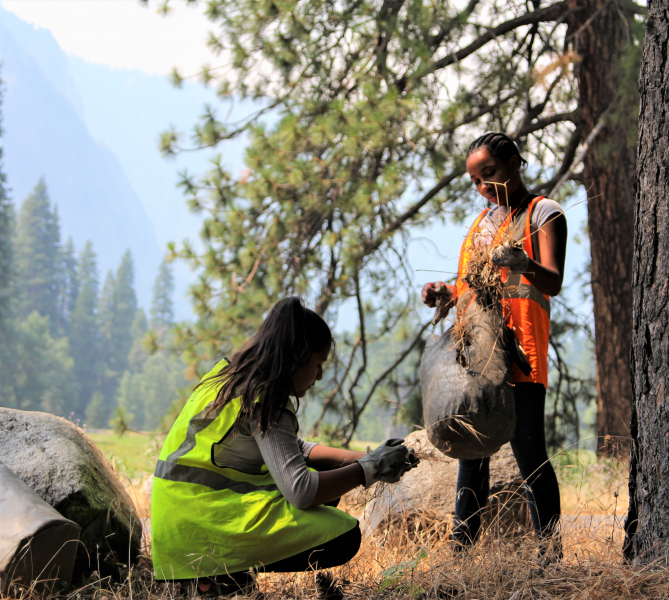
Middle school students from Parks in Focus, a donor-supported youth program, helped remove invasive plants as part of a project to improve pollinator habitat in Yosemite Valley. Photo: Courtesy of Udall Foundation
Working at six sites, from Cascade Falls to Cook’s Meadow, nearly 1,000 volunteers, interns and local students helped Yosemite crews collect hundreds of thousands of seeds, replant seven acres of native vegetation, and remove invasive plants such as bull thistle and mullein.
The result: abundant habitat for butterflies, bees, birds and other pollinators, which play a critical role in balanced ecosystems, and in our food system. (Pollinators fall at the focal point of a new 2018 project, too: grant-funded research on Yosemite’s butterfly populations, which can serve as bellwethers for environmental shifts.)
As monarchs and hummingbirds dart among newly planted wildflowers, donor-funded efforts are giving a leg up to another Valley-dwelling animal: the California red-legged frog. Biologists have released hundreds of the frogs along the Merced River in recent years; this year, wetland restoration near Royal Arches could expand the potential healthy terrain available to this threatened amphibian as it gains a webbed foothold in the Valley ecosystem.
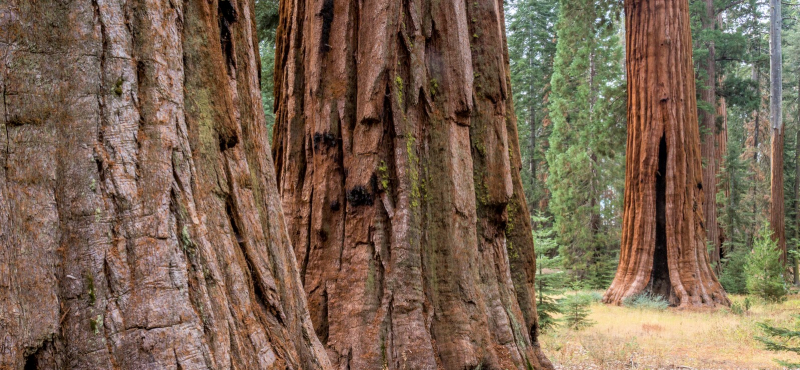
Giant sequoias in Mariposa Grove, where you might spot owls, deer, squirrels and other wildlife. Photo: Yosemite Conservancy/Keith Walklet
Finish up with a visit to Yosemite’s sequoia groves. Together, the three groves – Mariposa, Tuolumne and Merced – are home to hundreds of mature giant sequoias.
Several donor-funded projects have focused on restoring and protecting those ancient forests, including a major rehabilitation in Mariposa Grove (wrapping up in 2018) and efforts in the two northern groves to protect shallow roots, repair “eco-graffiti” carved into trunks, restore areas ruffled by curious visitors, and educate people about sticking to trails.
Each restoration step, large or small, helps ensure the well-being of the titanic trees — and, in turn, preserves important habitat for animals that live, hunt and nest among the sequoias, including rare great gray owls and Pacific fishers.
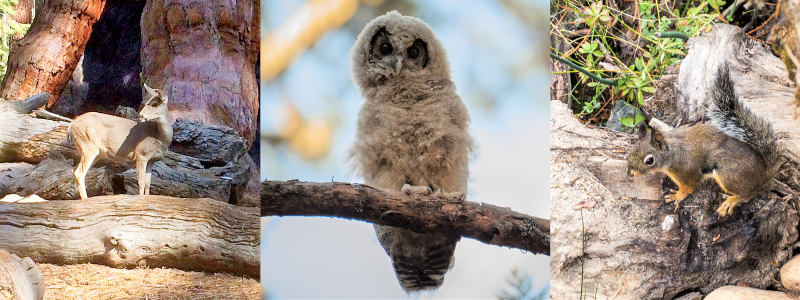
Many animals make their homes in Yosemite’s sequoia groves, including mule deer, spotted owls, and Douglas squirrels. Photos (left to right): Carolyn Botell, NPS/Dustin Garrison, Yosemite Conservancy/Keith Walket
While you might not always be able to spot signs of restoration work in Yosemite (and that’s often the point!), keep an eye out for wildlife going about their daily activities in their protected, healthy homes: turtles basking on sunny rocks, owls swooping from branches to capture prey, squirrels gnawing on sequoia cones. Consider the careful steps taken to ensure that those animals and their habitats can thrive, and then remember the steps you can take to keep ecosystems in good shape: Stay on trails whenever you can, brush off your clothes and gear to avoid transporting invasive seeds, camp on durable surfaces away from water, and observe wildlife from a distance.
Thanks to our donors for supporting restoration projects in Yosemite, and thanks to everyone who visits for doing your part to keep habitats healthy!
Above: Not bad for a backyard view! A male deer looks toward Half Dome from a meadow in Yosemite Valley. Photo: Christopher Michel

